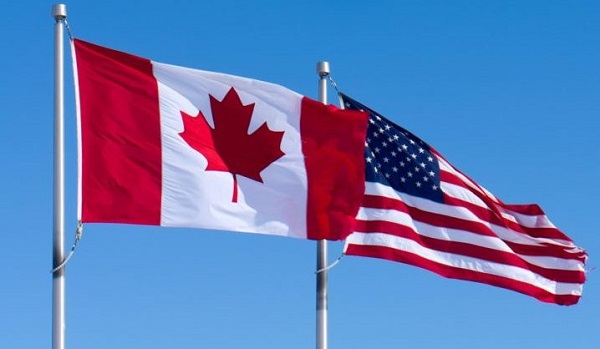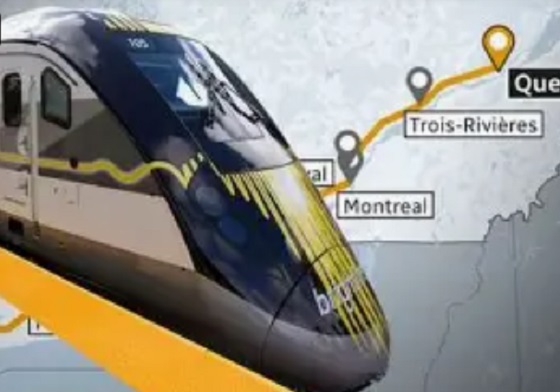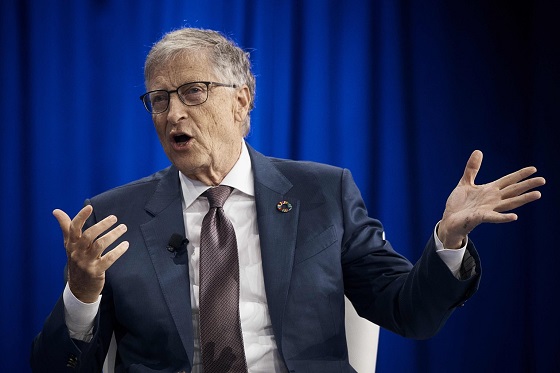Business
Base Policies on Reality – Not Myths, Models, Misinformation and Fearmongering

From the Frontier Centre for Public Policy
Donald Trump and JD Vance have a mandate on energy, economic, immigration and other issues that won them 50% of popular, 58% of electoral and 82% of US county votes.
On January 20 they will begin tackling the numerous problems bequeathed them by the Biden-Harris Administration and Washington Deep State: illegal immigration of criminals, terrorists and opportunists; outrageous government spending by bloated federal agencies; wars and crises across the globe; and federal and state politicians and bureaucrats determined to slow or stymie their every move.
Mr. Trump will let the DOGE out, to cut government waste. Pundits and political pros are offering advice across the board. My suggestions center on the “climate crisis” and the destructive policies it has justified.
1. First and foremost, withdraw the United States from the 2015 Paris climate straitjacket. Its terms and subsequent agreements require that the USA and other industrialized nations switch from fossil fuels to “clean renewable” energy and de-modernize agricultural and other practices, to eliminate “greenhouse gas” (GHG) emissions. That would bring blackouts, de-industrialization and job losses.
It would also mean now-rich nations must pay developing countries $300 billion per year for climate damage “compensation” and renewable energy financing. But China, India and other developing countries need not cut emissions and will continue using coal, oil and natural gas in ever-increasing quantities, to modernize, create vibrant economies and lift more people out of poverty. That would mean even zero fossil fuel use by Western nations would not reduce global atmospheric GHG levels at all.
Better yet, send the Paris document to Congress for Article II Senate advice and two-thirds consent. President Obama’s sly move of calling this accord a mere “agreement” that required no Senate “treaty” review cannot be countenanced. Paris was among the most far-reaching, impactful agreements in US history. It affects our energy, economy, jobs, living standards, healthcare, national security and more. It’s a treaty and should be treated as such.
2. Equally important, eliminate the institutionalized junk science, assertions and fearmongering that fossil fuel use has caused an existential climate crisis for people and planet. Begin by re-examining the 2009 Obama Environmental Protection Agency “Endangerment Finding” that carbon dioxide “pollution” threatens the American people’s health and welfare.
Fossil fuels provide 80% of America’s energy; raw materials for thousands of petrochemical products; and the foundation of our economy, health and welfare. Their emissions certainly contribute to the 0.04% CO2 in Earth’s atmosphere, but this miracle molecule enables and spurs plant growth, thereby feeding the animal kingdom and making nearly all life possible.
EPA’s convoluted finding defied science and reality. It allowed the Obama and Biden Administrations to justify biased climate “research,” anti-fossil fuel regulations, sprawling wind and solar installations, and the transformation of America’s entire energy system and economy.
The Endangerment Decision was likely the most “major federal action” in US history, yet it has no real statutory basis. It clearly defies the Supreme Court’s decisions in West Virginia v. EPA, Chevron v. Natural Resources Defense Council and Loper Bright Enterprises, Inc., v. Raimondo.
EPA Administrator Lee Zeldin should direct the agency to formally and publicly reexamine the secretive process that EPA employed to ensure its “endangerment” decision – with no contrarian science, evidence, questions or public hearings permitted to challenge its preordained edict. A fair, balanced, scientific review would demolish the faulty Finding and bring the agency into compliance with SCOTUS rulings.
The President-elect’s appointment of energy and environmental “czars” and National Energy Council will build on those important steps, help restore reality and common sense to America’s energy and climate policies, rein in other Biden-era regulations and executive actions, and advance Mr. Trump’s promise of US energy dominance and economic resurgence.
Other actions the new Administration and Congress should take include the following.
3. Utilize the Congressional Review Act to reverse eleventh-hour Biden-Harris regulatory sprees – such as its ban on further coal leasing in the Powder River Basin.
4. Open all US non-National-Park areas for no/low impact evaluation and exploration, to identify prospects warranting more detailed assessments for critically needed metals and minerals. Most of these public land areas were deliberately made off-limits to such evaluations by Congress, courts and the Deep State, making it impossible to weigh surface values against potential for world-class subsurface deposits.
China’s recent ban on exports of several vital metals and minerals underscores yet again why America must not rely on adversaries for raw materials critical for US defense, aerospace, battery, AI, wind, solar and other industries – especially when those materials could be found and developed in America, under the world’s best pollution control and environmental protection rules, technologies and practices.
5. Reopen the Delaware-sized “coastal plain” of Alaska’s South-Carolina-sized Arctic National Wildlife Refuge for oil and gas leasing, exploration and drilling. Congressional legislation in 2017 explicitly allowed those activities, but President Biden unilaterally cancelled all leases and permits in 2023.
6. Require that applicants for climate change research and modeling grants demonstrate that their previous models and studies have been confirmed by actual temperature, drought and extreme weather data and evidence; and provide computer codes and analyses so that reviewers can view and evaluate their work.
7. Define “sustainability” to reflect complete global life-cycle raw material requirements, mining and processing needs and impacts, energy required to produce raw materials and manufacture energy and other systems, and land, air and water pollution resulting from all those activities. This will ensure that wind, solar, battery, electric vehicle and other technologies are not classified as “clean, renewable and sustainable” merely because they don’t emit CO2 or pollution after they start operating.
8. End subsidies and fast-track permitting for wind and solar installations – especially offshore wind, where raw material requirements and costs are many times higher than for onshore turbines and far more excessive than that for combined-cycle gas generators.
9. Require that wind and solar projects, and associated backup battery and transmission line projects, meet the same environmental review standards and requirements as required for oil, gas, coal and metals mining, and nuclear projects, regarding local, regional and global air and water pollution, land and habitat destruction, wildlife disturbance and loss, and post-project equipment removal and land reclamation.
Even better, cancel the entire offshore wind program. Its electricity is weather-dependent and ultra-expensive, threatens wildlife and fisheries, and requires unjustifiable amounts of raw materials.
10. Expand and streamline programs to bring new nuclear power plants online, especially small modular reactors – to meet rapidly expanding needs for abundant, reliable, affordable electricity for data centers, artificial intelligence, and increasingly electrified households, technologies and industries.
11. Terminate Diversity Equity Inclusion, Environment Social Governance, and Environmental and Climate Justice programs, offices and funding. They only serve as twisted justifications for arbitrarily selecting preferred companies and communities that are often less qualified to serve public health and safety.
There is much more to be done. But this is a solid beginning for reducing or eliminating needless, excessive and harmful pseudo science, grants, policies, practices and regulations – and restoring government of, by and for the People.
Paul Driessen is senior policy analyst for the Committee For A Constructive Tomorrow and author of books and articles on energy, environment, climate and human rights issues.
Business
Inflation Reduction Act, Green New Deal Causing America’s Energy Crisis


From the Daily Caller News Foundation
By Greg Blackie
Our country is facing an energy crisis. No, not because of new demand from data centers or AI. Instead, it’s because utilities in nearly every state, due to government imposed “renewable” mandates, self-imposed mandates, and the supercharging of the Green New Scam under the so-called “Inflation Reduction Act,” have been shutting down vital coal resources and building out almost exclusively intermittent and costly resources like solar, wind, and battery storage.
President Donald Trump understands this, and that is why on day one of his administration he declared an Energy Emergency. Then, a few months later, the President signed a trio of Executive Orders designed to keep our “beautiful, clean coal” burning and providing the reliable, baseload, and affordable electricity Americans have benefitted from for generations.
Those orders have been used to keep coal generation online that was slated to shut down in Michigan and will potentially keep two units operating that were scheduled to shut down in Colorado this December. In Arizona, however, the Cholla Power Plant in Navajo County was shuttered by the utility just weeks after Trump explicitly called out the plant for saving in a press conference.
Dear Readers:
As a nonprofit, we are dependent on the generosity of our readers.
Please consider making a small donation of any amount here.
Thank you!
Unlike states with green mandates, Arizona essentially has none. Instead, our utilities, like many around the country, have self-imposed commitments to go “Net Zero” by 2050. To meet that target, they have planned to shut down all coal generation in the state by 2032 and plan to build out almost exclusively solar, wind, and battery storage to meet an expected explosive growth in demand, at a cost of tens of billions of dollars. So it is no surprise that like much of the rest of the country, Arizona is facing an energy crisis.
Taking a look at our largest regulated utilities (APS, TEP, and UNS) and the largest nonprofit utility, SRP, future plans paint an alarming picture. Combined, over the next 15 years, these utilities expect to see demand increase from 19,200 MW to 28,000 MW. For reference, 1,000 MW of electricity is enough to power roughly 250,000 homes. To meet that growth in demand, however, Arizonans will only get a net increase of 989 MW of reliable generation (coal, natural gas, and nuclear) compared to 22,543 MW (or nearly 23 times as much) of intermittent solar, wind, and battery storage.
But what about all of the new natural gas coming into the state? The vast majority of it will be eaten up just to replace existing coal resources, not to bring additional affordable energy to the grid. For example, the SRP board recently voted to approve the conversion of their Springerville coal plant to natural gas by 2030, which follows an earlier vote to convert another of their coal plants, Coronado, to natural gas by 2029. This coal conversion trap leaves ratepayers with the same amount of energy as before, eating up new natural gas capacity, without the benefit of more electricity.
So, while the Arizona utilities plan to collectively build an additional 4,538 MW of natural gas capacity over the next 15 years, at the same time they will be removing -3,549 MW (all of what is left on the grid today) of coal. And there are no plans for more nuclear capacity anytime soon. Instead, to meet their voluntary climate commitments, utilities plan to saddle ratepayers with the cost and resultant blackouts of the green new scam.
It’s no surprise then that Arizona’s largest regulated utilities, APS and TEP, are seeking double digit rate hikes next year. It’s not just Arizona. Excel customers in Colorado (with a 100% clean energy commitment) and in Minnesota (also with a 100% clean energy commitment) are facing nearly double-digit rate hikes. The day before Thanksgiving, PPL customers in Rhode Island (with a state mandate of 100% renewable by 2033) found out they may see rate hikes next year. Dominion (who has a Net Zero by 2050 commitment) wanted to raise rates for customers in Virginia by 15%. Just last month, regulators approved a 9% increase. Importantly, these rate increases are to recover costs for expenses incurred years ago, meaning they are clearly to cover the costs of the energy “transition” supercharged under the Biden administration, not from increased demand from data centers and AI.
It’s the same story around the country. Electricity rates are rising. Reliability is crumbling. We know the cause. For generations, we’ve been able to provide reliable energy at an affordable cost. The only variable that has changed has been what we are choosing to build. Then, it was reliable, dispatchable power. Now, it is intermittent sources that we know cost more, and that we know cause blackouts, all to meet absurd goals of going 100% renewable – something that no utility, state, or country has been able to achieve. And we know the result when they try.
This crisis can be avoided. Trump has laid out the plan to unleash American Energy. Now, it’s time for utilities to drop their costly green new scam commitments and go back to building reliable and affordable power that generations to come will benefit from.
Greg Blackie, Deputy Director of Policy at the Arizona Free Enterprise Club. Greg graduated summa cum laude from Arizona State University with a B.S. in Political Science in 2019. He served as a policy intern with the Republican caucus at the Arizona House of Representatives and covered Arizona political campaigns for America Rising during the 2020 election cycle.
Business
Fuelled by federalism—America’s economically freest states come out on top

From the Fraser Institute
Do economic rivalries between Texas and California or New York and Florida feel like yet another sign that America has become hopelessly divided? There’s a bright side to their disagreements, and a new ranking of economic freedom across the states helps explain why.
As a popular bumper sticker among economists proclaims: “I heart federalism (for the natural experiments).” In a federal system, states have wide latitude to set priorities and to choose their own strategies to achieve them. It’s messy, but informative.
New York and California, along with other states like New Mexico, have long pursued a government-centric approach to economic policy. They tax a lot. They spend a lot. Their governments employ a large fraction of the workforce and set a high minimum wage.
They aren’t socialist by any means; most property is still in private hands. Consumers, workers and businesses still make most of their own decisions. But these states control more resources than other states do through taxes and regulation, so their governments play a larger role in economic life.
At the other end of the spectrum, New Hampshire, Tennessee, Florida and South Dakota allow citizens to make more of their own economic choices, keep more of their own money, and set more of their own terms of trade and work.
They aren’t free-market utopias; they impose plenty of regulatory burdens. But they are economically freer than other states.
These two groups have, in other words, been experimenting with different approaches to economic policy. Does one approach lead to higher incomes or faster growth? Greater economic equality or more upward mobility? What about other aspects of a good society like tolerance, generosity, or life satisfaction?
For two decades now, we’ve had a handy tool to assess these questions: The Fraser Institute’s annual “Economic Freedom of North America” index uses 10 variables in three broad areas—government spending, taxation, and labor regulation—to assess the degree of economic freedom in each of the 50 states and the territory of Puerto Rico, as well as in Canadian provinces and Mexican states.
It’s an objective measurement that allows economists to take stock of federalism’s natural experiments. Independent scholars have done just that, having now conducted over 250 studies using the index. With careful statistical analyses that control for the important differences among states—possibly confounding factors such as geography, climate, and historical development—the vast majority of these studies associate greater economic freedom with greater prosperity.
In fact, freedom’s payoffs are astounding.
States with high and increasing levels of economic freedom tend to see higher incomes, more entrepreneurial activity and more net in-migration. Their people tend to experience greater income mobility, and more income growth at both the top and bottom of the income distribution. They have less poverty, less homelessness and lower levels of food insecurity. People there even seem to be more philanthropic, more tolerant and more satisfied with their lives.
New Hampshire, Tennessee, and South Dakota topped the latest edition of the report while Puerto Rico, New Mexico, and New York rounded out the bottom. New Mexico displaced New York as the least economically free state in the union for the first time in 20 years, but it had always been near the bottom.
The bigger stories are the major movers. The last 10 years’ worth of available data show South Carolina, Ohio, Wisconsin, Idaho, Iowa and Utah moving up at least 10 places. Arizona, Virginia, Nebraska, and Maryland have all slid down 10 spots.
Over that same decade, those states that were among the freest 25 per cent on average saw their populations grow nearly 18 times faster than those in the bottom 25 per cent. Statewide personal income grew nine times as fast.
Economic freedom isn’t a panacea. Nor is it the only thing that matters. Geography, culture, and even luck can influence a state’s prosperity. But while policymakers can’t move mountains or rewrite cultures, they can look at the data, heed the lessons of our federalist experiment, and permit their citizens more economic freedom.
-

 Alberta1 day ago
Alberta1 day agoThe Recall Trap: 21 Alberta MLA’s face recall petitions
-

 illegal immigration1 day ago
illegal immigration1 day agoUS Notes 2.5 million illegals out and counting
-

 International1 day ago
International1 day agoTyler Robinson shows no remorse in first court appearance for Kirk assassination
-

 2025 Federal Election2 days ago
2025 Federal Election2 days agoToo Close for Comfort: Carney Floor Crosser Comes From a Riding Tainted by PRC Interference
-

 Business2 days ago
Business2 days agoHigh-speed rail between Toronto and Quebec City a costly boondoggle for Canadian taxpayers
-

 Business2 days ago
Business2 days agoThe world is no longer buying a transition to “something else” without defining what that is
-

 Energy1 day ago
Energy1 day agoCanada’s future prosperity runs through the northwest coast
-

 Daily Caller18 hours ago
Daily Caller18 hours ago‘There Will Be Very Serious Retaliation’: Two American Servicemen, Interpreter Killed In Syrian Attack









